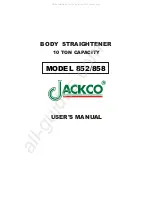
MA-SE-HE00-01-11 Manual HEMA eng rev11
Page
2
of
8
TECHNICAL FEATURES
Voltage
Nominal battery recharge
13.0
13.8 Vdc
Minimum command
4.1 Vdc
Minimum supplying
10 Vdc
Max supplying
15 Vdc
Current
Max consumption from
control panel (for battery
recharge and sound)
500 mA
100 mA
Battery consumption in
alarm
1.3 A +100/-300 mA
Flashing unit consumption 90 mA
10 mA
Consumption in stand-by
15 mA
Consumption from control
inputs
+0.5 mA @12 Vdc; -0.3 mA @ 0 Vdc
Open collector
-10 mA Max
Fundamental frequency
See CHART 6
Sound pressure
See DIAGRAM 1
Life of LED flashing light
1,000,000 flashes
Timings
3 minutes, settable at 8 min
Battery
Housing capacity
12 Vdc 1.2 Ah or 12 Vdc 2.2 Ah max
Duration in stand-by
120 hours using 12 Vdc 2.2 Ah model
Control panel command
2 or 3 wires
Tamper switch
N.C. 0.2 A max; cover opening and
sounder removal from wall
Mechanic
Cover
Painted ABS
Base
ABS
Internal cover
Zinc-plated steel
Flash cover
Polycarbonate
Temperature conditions
from –25°C to +55°C
Environmental class
Class IV
IP protection
IP 44
Relative humidity condition
from 20% to 100% of RH
Size
330x210x110 (H x L x W)
Weight
1,957 gr
Standards compliance
T031:2014
EN50131-4:2009
Security
L and LS models
Grade 3
LSP model
Grade 4
MOUNTING:
1.
Use the 6mm plugs to fix the siren on the wall; always check if the tamper works properly;
2.
Insert the connection cables through the holes located on the lower part of the sounder base;
3.
If necessary, modify the default settings by acting on the dipswitches as shown in the charts below;
4.
Connect battery and power supplying to the alarm control panel;
5.
Close both internal and external covers using the screws provided.
Battery must have UL94-HB flammability rate.
Power supplying must be of SELV type.
Attention: in order to avoid moisture formation inside the sounder, it is important to prevent air from flowing in the cable tray. To obtain such
a result, once the sounder is connected, seal the hole using some silicon or any other filler type. This operation avoids the formation of moisture
inside the sounder; condensation mostly appears in winter and it is usually caused by warm and humid air coming out of the wall where the
sounder is installed and passing through the holes located on the sounder base. Condensation and moisture can affect the sounder which
might not work properly.


























